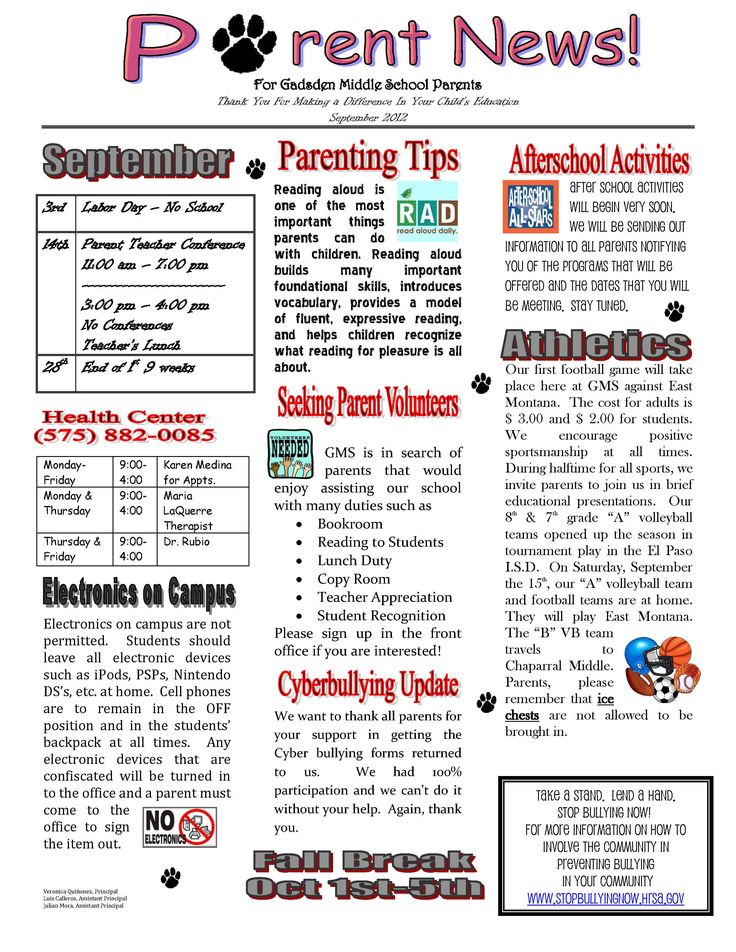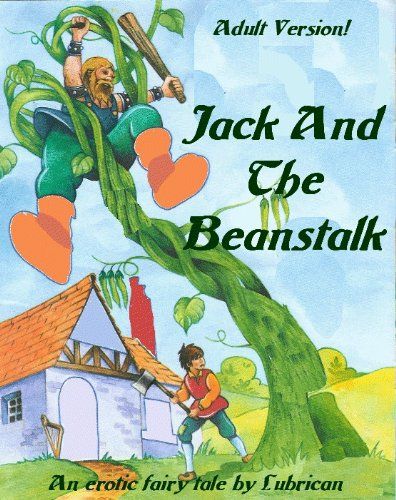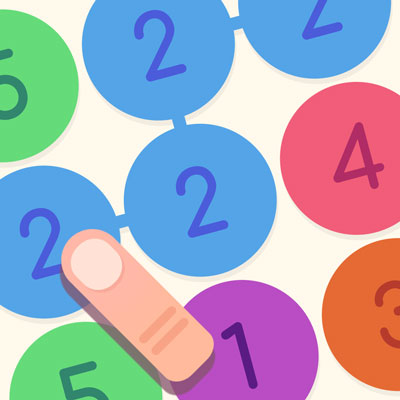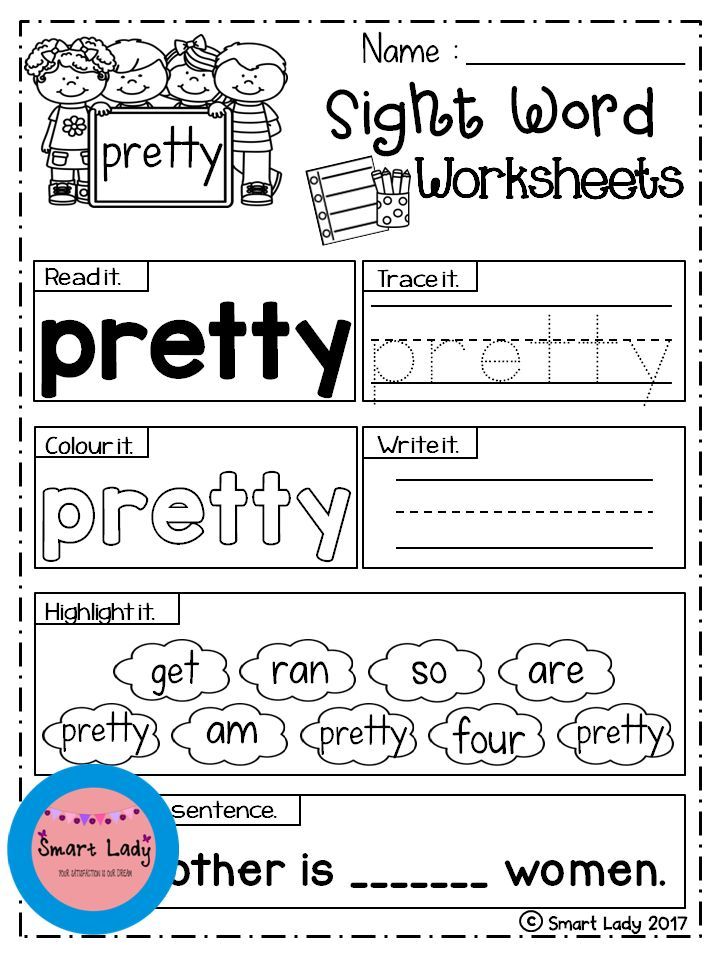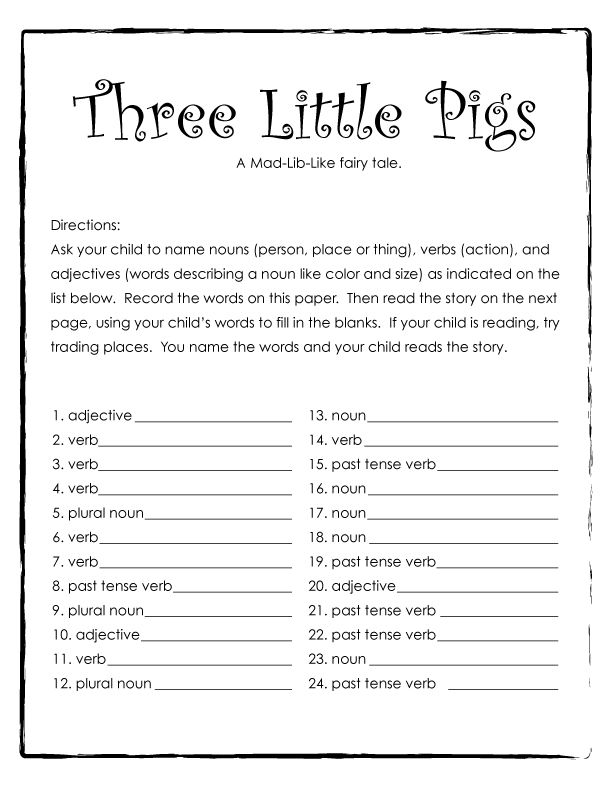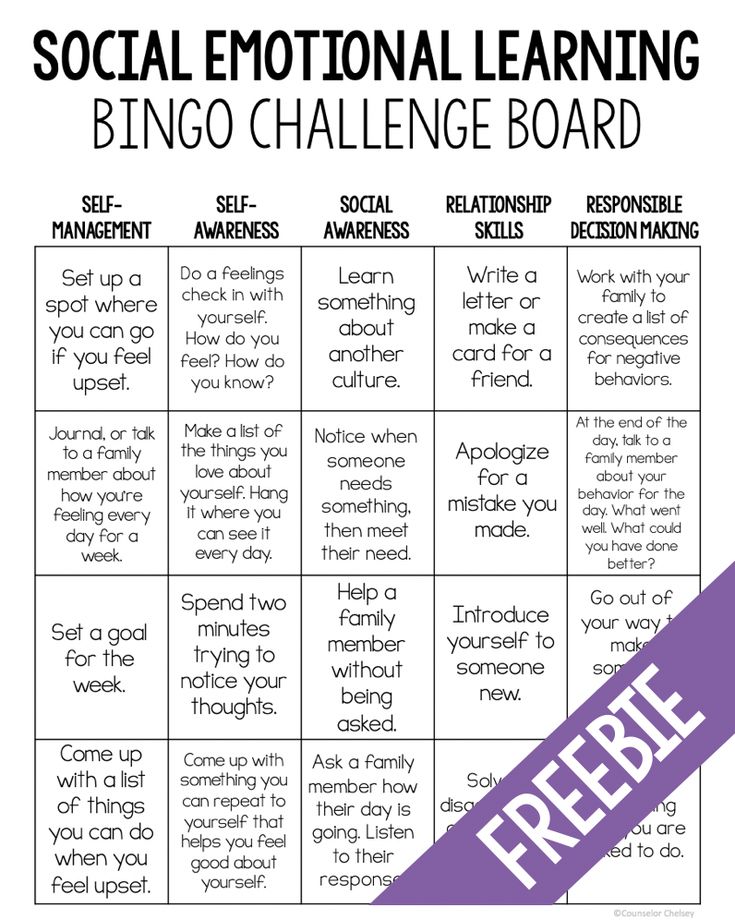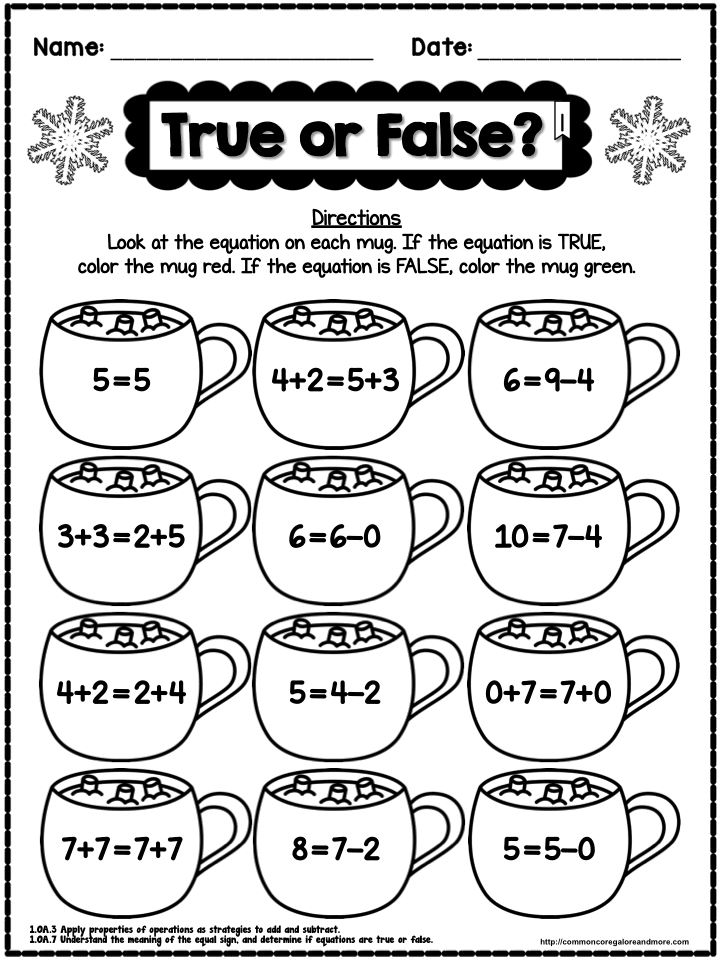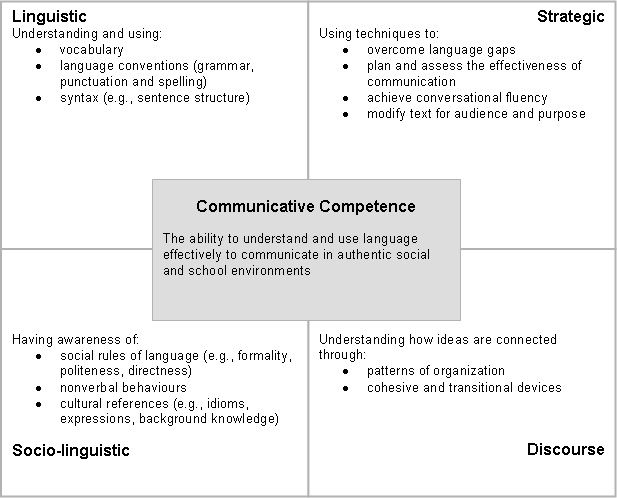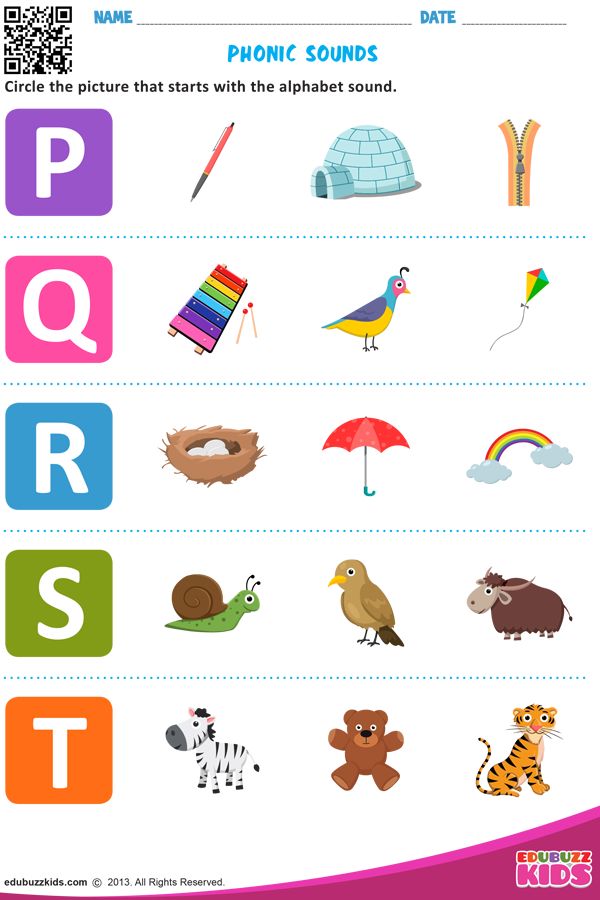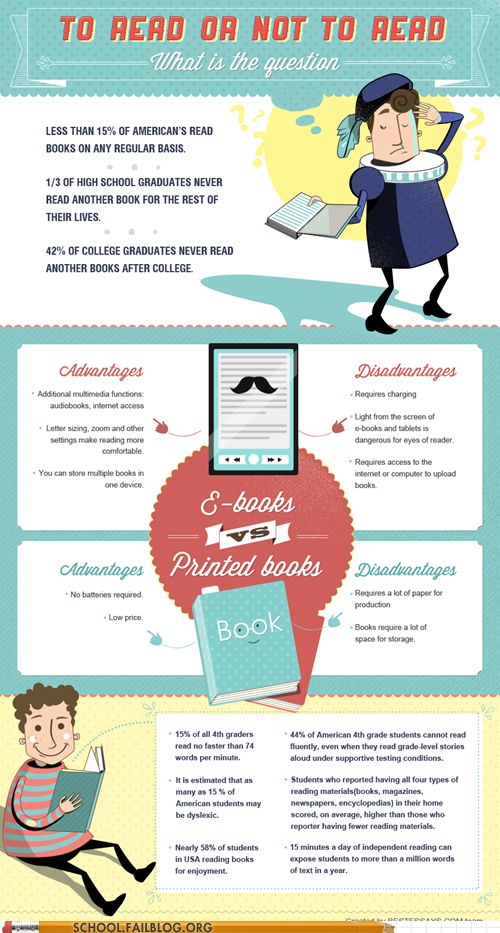Reading activities for comprehension
Activities to Improve Reading Comprehension
We’ve all experienced it – we finish reading a page in a book and have no idea what we’ve read. For most advanced readers this is because we are tired or distracted. However, many young readers struggle with reading comprehension every time they read. They may “read” the passage perfectly but have no real understanding of the story. Reading comprehension is an important part of achieving full literacy. If you have a kiddo struggling with reading comprehension, try some of the following activities.
Read-Aloud Questions
No matter a child’s age, it’s always good to do read-alouds together. One benefit of reading together is it allows the adult to ask questions along the way. Asking questions such as, “What do you think will happen next?” or “I wonder why the character did that?” helps the child to engage with and think critically about the text and allows the adult to judge how well the passage is being comprehended.
Take a look at these questions to increase reading comprehension from My Story Time Corner.
Story Sequencing
Sequencing is another way you can help a little one gain reading comprehension. Being able to order the sequence of events in a story is a key component in understanding plot. There are several ways you can practice story sequencing with your reader. You could simply have him write a sentence or draw a picture about what happened at the beginning, middle and end of the story. You could also create these cute story stones if you wanted to get extra creative. Visit Imagination Soup for complete story stone instructions.
Retelling
Closely related to story sequencing, retelling is also good practice for achieving reading comprehension. The rainbow reading bracelet is the perfect tool for gaining proficiency in retelling. Using colored beads on a bracelet as prompts for retelling (green – get ready for a few more details) the child learns how to summarize a story in an orderly fashion.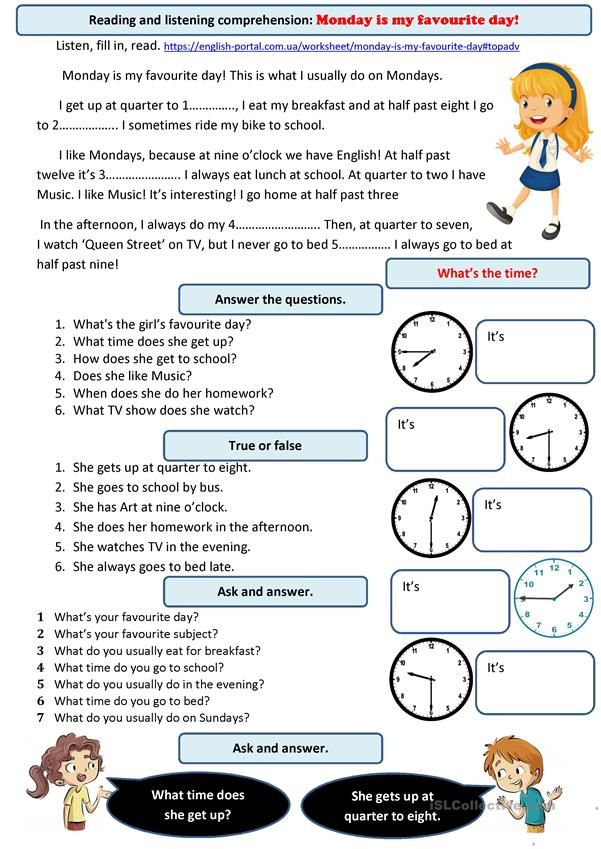 Check out directions for making your own rainbow retelling bracelet at Growing Book by Book.
Check out directions for making your own rainbow retelling bracelet at Growing Book by Book.
Close Reading
Learning to pay careful attention to a text is a skill that doesn’t always come naturally to beginning readers. Children have to be taught how to look closely at a passage in order to glean the most details and thus gain a better understanding of the author’s intent. Teaching a child to reread a passage slowly and thoughtfully will help her better comprehend what she has read. Close reading with Oreos is a great (and delicious) way to hone careful reading skills and will have your kiddo begging for more close reading practice. Visit Who’s Who and Who’s New for details on implementing this fun activity.
Inferencing
Learning to infer (draw conclusions) is crucial to gaining reading comprehension. There are many subtleties in stories that the author expects readers to notice; if these nuances aren’t picked up on the reader may miss important points of the story.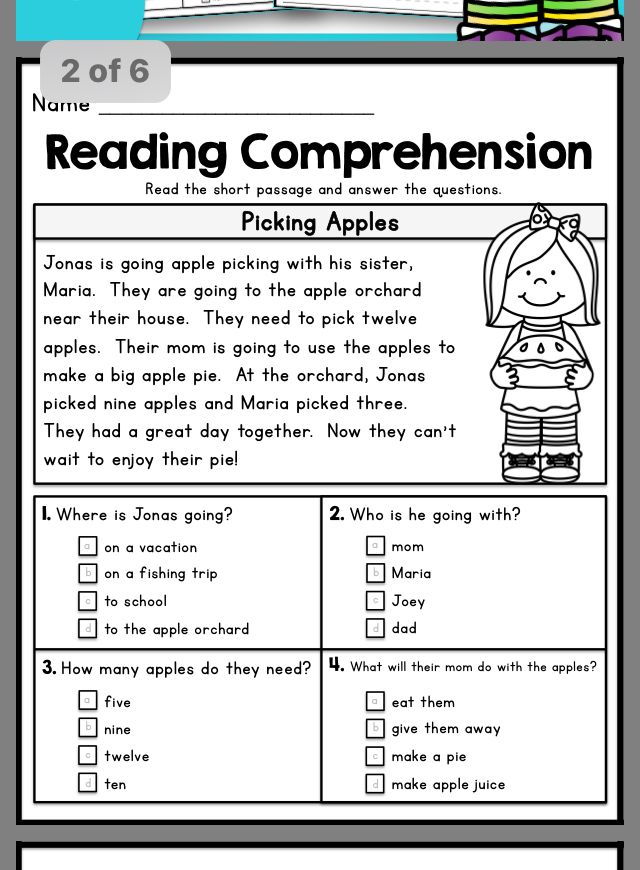 Ashleigh at Ashleigh’s Education Journey uses wordless picture books to demonstrate this skill. Click on the above link to learn more about using wordless picture books to teach your child how to make inferences.
Ashleigh at Ashleigh’s Education Journey uses wordless picture books to demonstrate this skill. Click on the above link to learn more about using wordless picture books to teach your child how to make inferences.
Red Apple Reading is committed to helping kids become successful readers. Part of achieving reading success is becoming proficient in comprehension. We hope these activities are helpful to your budding reader! Interested in more ways to improve a child’s literacy skills? Check out Red Apple Reading’s online reading program. Your child will learn phonics, phonemic awareness, sight words, vocabulary, fluency and reading comprehension while playing fun games and reading original stories. Get our full program free for seven days!
11 Free Reading Comprehension Activities For Students
There can be a hundred teachers in a room and ninety-nine of them will have different ideas on how to help with reading comprehension. Some of them might argue that rigorous testing is the best methodology, whilst others will argue that regular pop quizzing is the best way to go.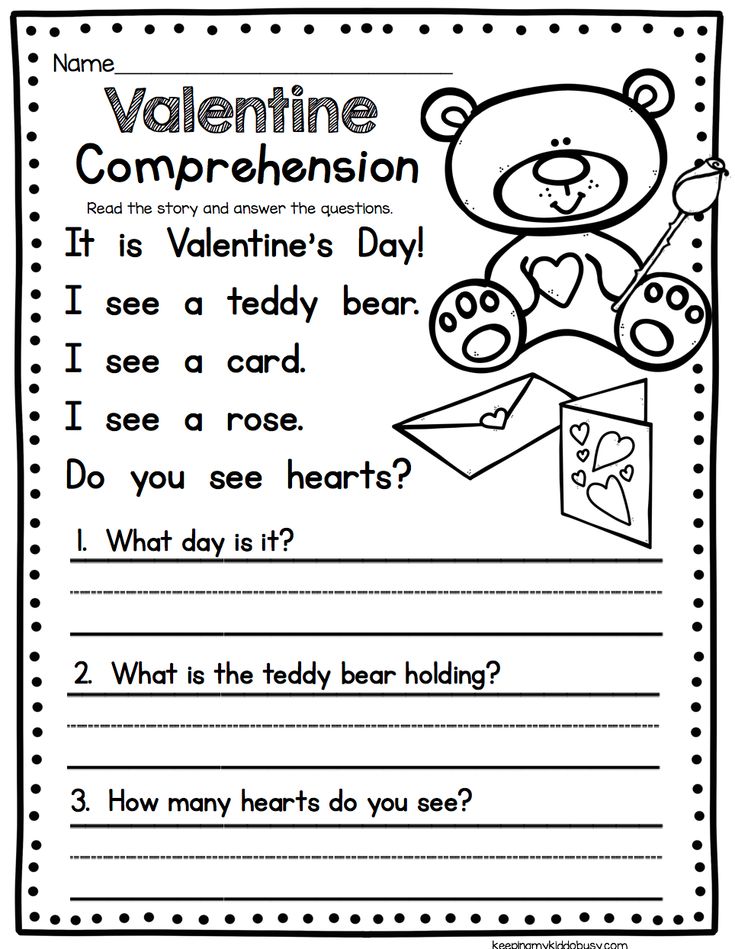 Truth be told, there is no "one" exact way to ensure that your students understand what they are reading. Instead, it's best to adopt a variety of different solutions.
Truth be told, there is no "one" exact way to ensure that your students understand what they are reading. Instead, it's best to adopt a variety of different solutions.
Here is a list of the top 11 reading comprehension activities. You can use them to introduce new reading comprehension techniques, or simply to check your students’ understanding so far. They are all fun, innovative ways to approach reading comprehension and demonstrate your students' skills.
1. Roll & Chat Dice
This fun activity includes lots of comprehension questions to check your kids have effective reading comprehension skills. You can adapt and change this for any student, ensuring that they are reading at grade.
Learn more: Teachers Pay Teachers
2. WANTED Poster
You can use this activity not only to ensure that your students have basic story understanding but also to demonstrate they know character traits. It can also be applied to a wide variety of texts, too. Try including some questions about characters and story detail for even more teaching of comprehension.
Try including some questions about characters and story detail for even more teaching of comprehension.
Learn more: Education.com
3. Story Cheeseburger
This is unfortunately not as delicious as it sounds! You can use this activity to check simple reading comprehension of story structure, as well as a more advanced understanding of story aspects. Try displaying this colorful reading comprehension activity to brighten up your classroom, too!
Learn more: Unique Teaching Resources
4. Reading Comprehension Worksheets
This website has plenty of reading comprehension worksheets that you can print out and use for a reading passage. You can use them to teach reading strategy as part of a typical reading lesson or to have some book talk.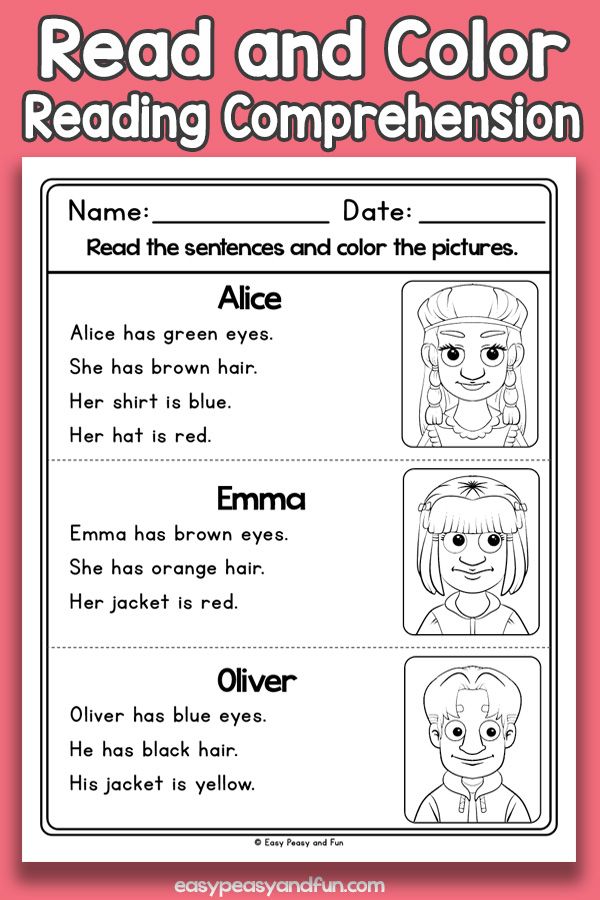
Learn more: K5 Learning
5. Make a Timeline
You can use this research-based teaching strategy for any non-fiction story to help demonstrate reading to knowledge skills. Ask relevant student questions about the topic of study to help expand on their knowledge and sequence events.
Learn more: Education.com
6. Yellow Brick Road Retelling
This is an excellent reading project to get your kids involved in active reading, instead of just being passive. You can use it to talk about many elements of the story and a narrative text. You can differentiate it according to your students' reading skills, from simple story elements like the story title to more developed ideas like meaning during reading.
Learn more: Just Cara Carroll
7. Anticipation Guide
This is a perfect pre-reading activity to get your students to understand the reading process in more detail. They will need to make some predictions about the story and share their opinions on some of the ideas that the book presents.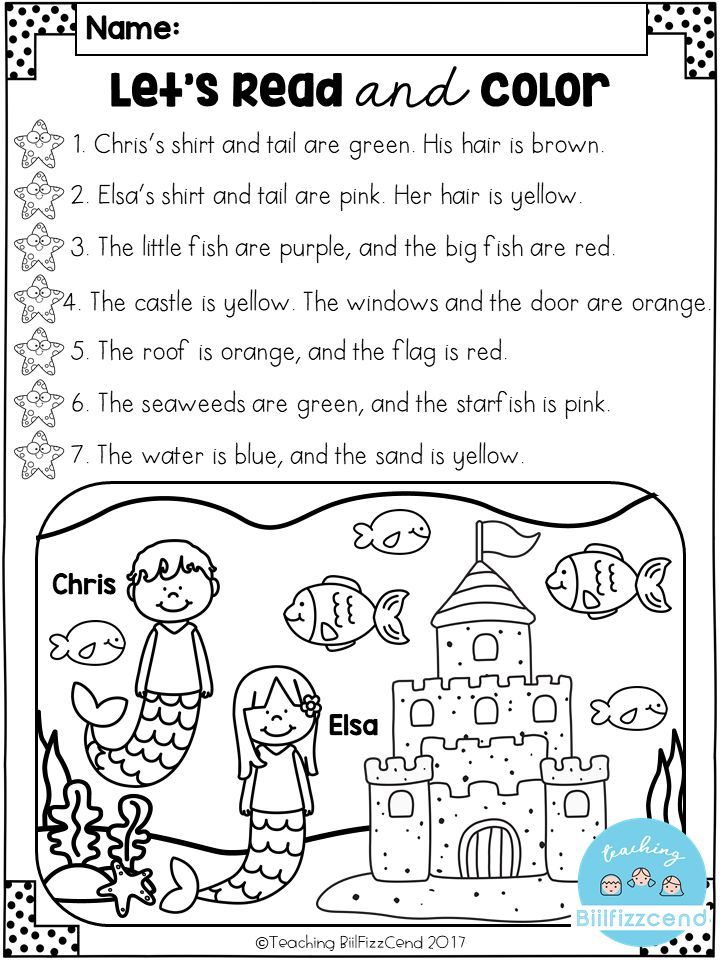 You can also return to this guide after reading to demonstrate how their reading comprehension has developed.
You can also return to this guide after reading to demonstrate how their reading comprehension has developed.
Learn more: Reading Rockets
8. Question Ball
You can get really creative with this activity by getting the whole class involved to answer some comprehension topic questions. You can even use it to revise key quotations or as part of a reading selection. Definitely one for student engagement!
Learn more: Coffee Cups and Crayons
9. Lego Retelling
This one is more suitable for a picture book with younger learners, but it can also be used by upper-grade students, too. Your kids will have to use the individual Lego pieces to build key scenes from a text, then explain what they have built. They can write down what they have said, too, to show that they have really understood the text well.
Learn more: The Educators Pin On It
10. Story Telling Bracelet
Another more hands-on activity, the teaching procedure of this involves assigning each color of the bracelet to a particular part of the text. For example, yellow, green, and blue all represent plot events. This is particularly useful to create a sequence of events and make story connections.
Learn more: Growing Book By Book
11. Reading Cheat Sheets
Need to help your students understand critical reading skills? Use these cheat sheets to provide them with expert details and things to keep in mind while they read a text. This includes key skills like looking at the cover, thinking about the content-area text, and other discussion questions to consider during the reading-thinking process.
Learn more: Teachers Pay Teachers
These are just a few of the best ways to make reading more accessible for your learners.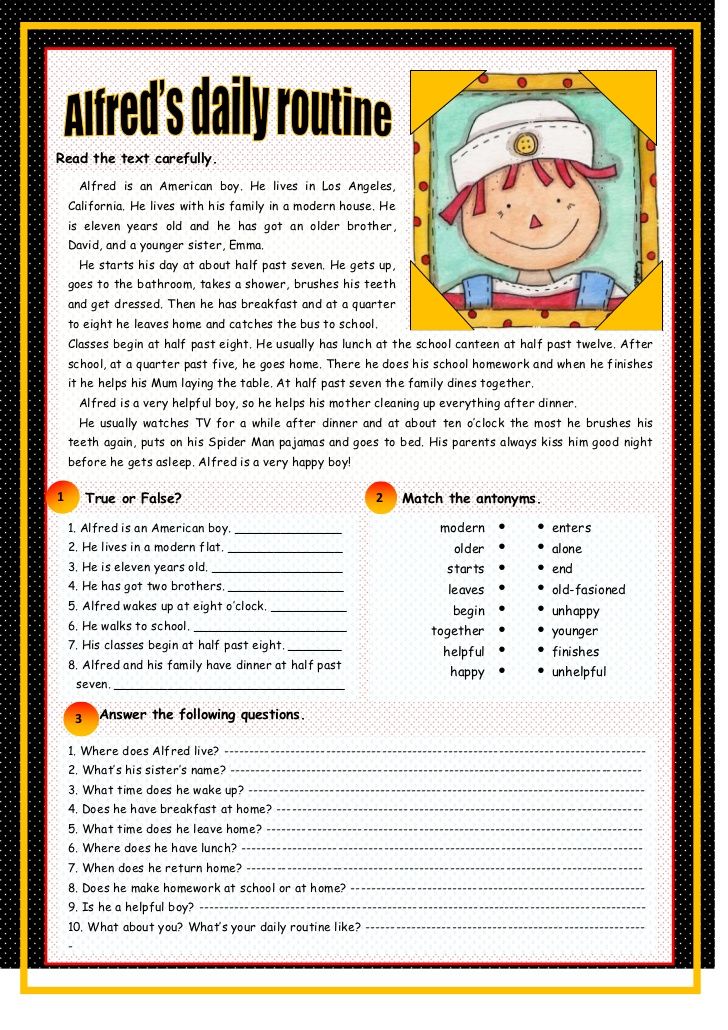 The majority of these activities can be expanded upon to meet the specific needs of your readers, whether that be sequencing events or providing a detailed analysis of character.
The majority of these activities can be expanded upon to meet the specific needs of your readers, whether that be sequencing events or providing a detailed analysis of character.
Frequently Asked Questions
What are comprehension activities?
Comprehension activities are activities or games that can be used to help your students to demonstrate what they know about a text. This usually covers but is not limited to, setting, plot, and character. Comprehension activities can be expanded to include other ideas too, like the meaning of the text, and can go beyond the details included within the text, such as in terms of contextual information surrounding the creation of the book.
What is the best way to teach comprehension?
Unfortunately, there is no definitive "best" way to teach comprehension to your kids, as each student is different and will respond to different activities. However, one thing that will definitely work is to make comprehension an enjoyable process.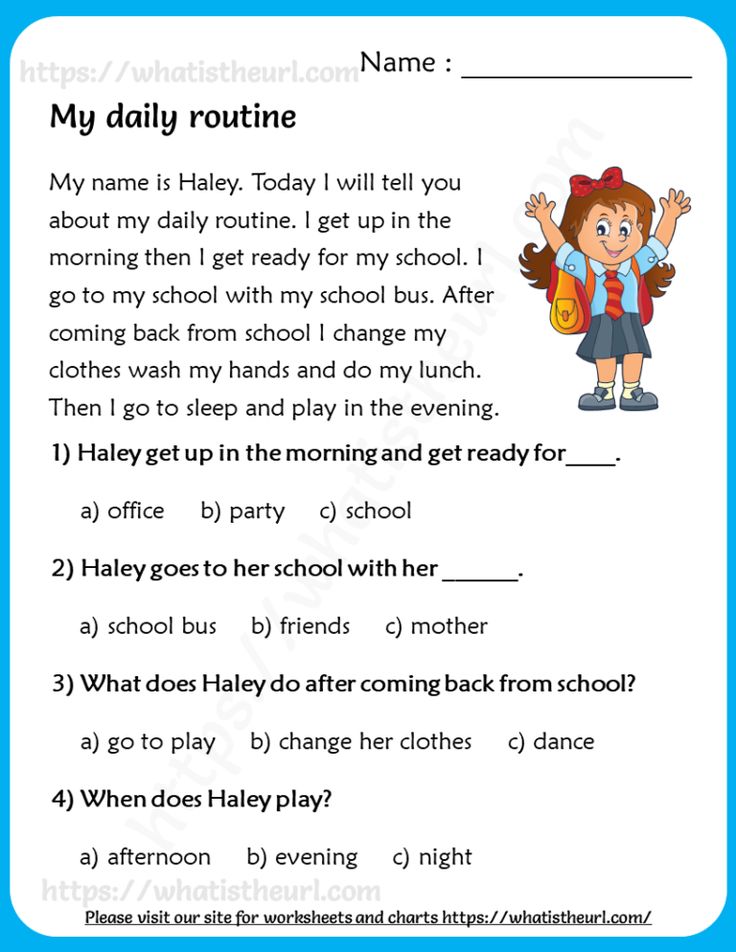 Try using the activities above to help with this and avoid simply completing tests or quizzes, as these will not make your student engaged.
Try using the activities above to help with this and avoid simply completing tests or quizzes, as these will not make your student engaged.
How can I improve my comprehension?
Try to go beyond simple ideas of comprehension. Your basic comprehension of a text should include the key events (or plot), the setting (where and when the story happens), and characters (the people or things that the text is about). You should try to expand beyond this by thinking about the meaning of the text. What message was the writer trying to put across? Reading comprehension goes beyond the words on the page - you need to think about the writer's craft, too.
What are the 3 main types of reading strategies?
The key reading strategies that you will likely encounter are scanning, skimming, and detailed reading. Scanning involves looking for specific information in a text, such as a keyword or detail. Skimming is slightly more in-depth as it is about understanding the main idea of a text by reading small chunks of the passage.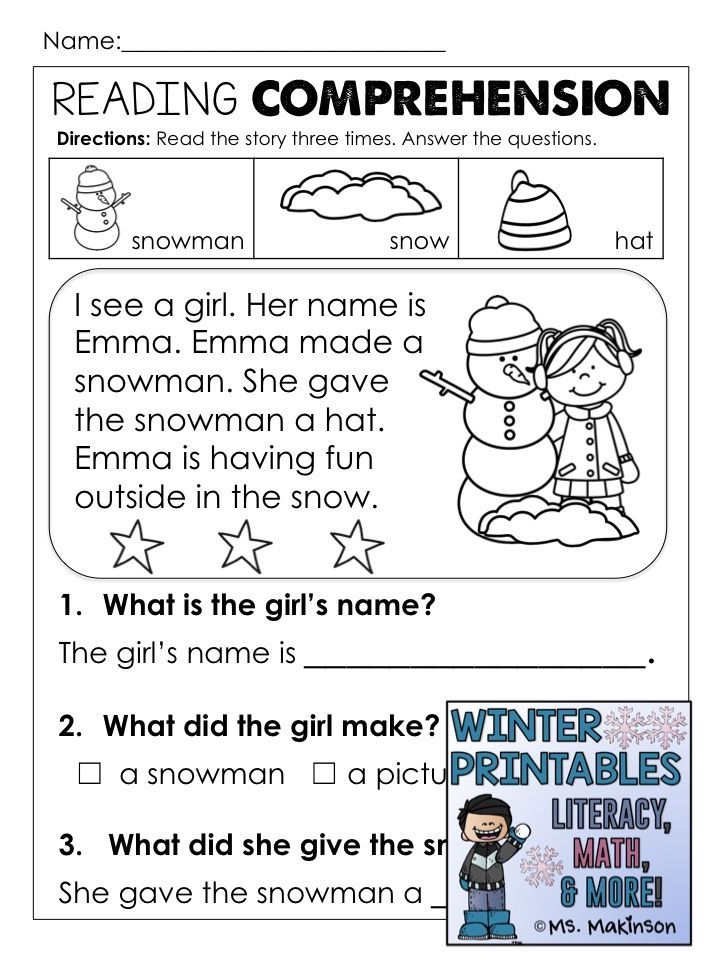 Detailed reading is the slowest reading process but is the one that can help you get the most information from a text. Using this last strategy, your kids will understand approximately 80% of the text. Even so, each of these strategies is vital for teaching your students how to read effectively for information.
Detailed reading is the slowest reading process but is the one that can help you get the most information from a text. Using this last strategy, your kids will understand approximately 80% of the text. Even so, each of these strategies is vital for teaching your students how to read effectively for information.
Reading as understanding | Papmambuk
Reading is a complex skill. It develops gradually, up to fifteen years, and the degree of its formation is determined not only by technique, not only by the ability to speak 130 words per minute, but also by such a criterion as “reading comprehension”. Actually, reading occurs only where there is understanding.
We, parents, devote all our energy and time to teaching the child letters and “movement” according to the primer. But for some reason we are not very concerned about the ability to understand. And if they care, then we usually understand it very flatly - as a formal assimilation of the text. nine0003
It has been stuck in us since time immemorial, it was inherited: if you want to know that the child has mastered (here it is, the “brand” word of Soviet pedagogy), ask “questions on the text”.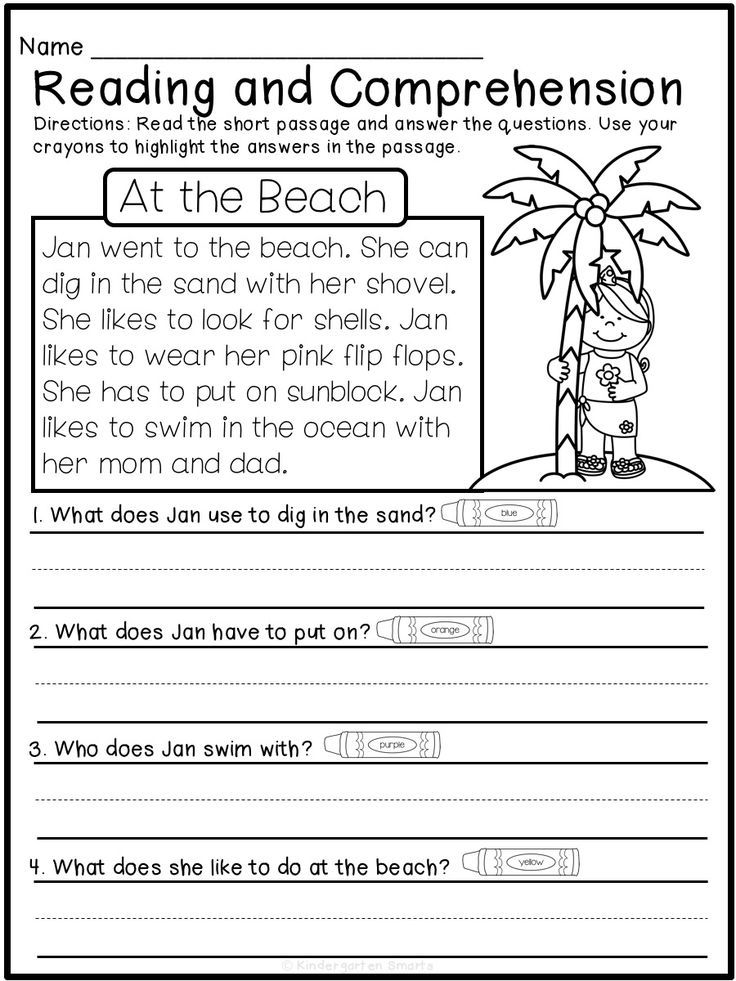
Well, we ask (focusing on high examples of educational and pedagogical literature):
– Who is this fairy tale about?
- What happened to the hero?
- Who helped him?
- How did he outsmart the enemy?
And finally, percussion:
– What is the main idea of this piece? What does this story teach us? nine0003
The last two questions are classics of the genre. Or rather, a classic of the destruction of the genre. We learned from the school course that "dialogue is a conversation between two or more persons." We are not at all embarrassed that the dialogue of a child and a parent or a child and a teacher still requires an additional definition: for example, "dialogue of two interested parties."
Otherwise, the conversation between the investigator and the person being interrogated is also classified as a dialogue. Only one person is interested in it.
But the parent and the teacher are inferior even to the investigator in this criterion, because they ask absolutely uninteresting questions for themselves.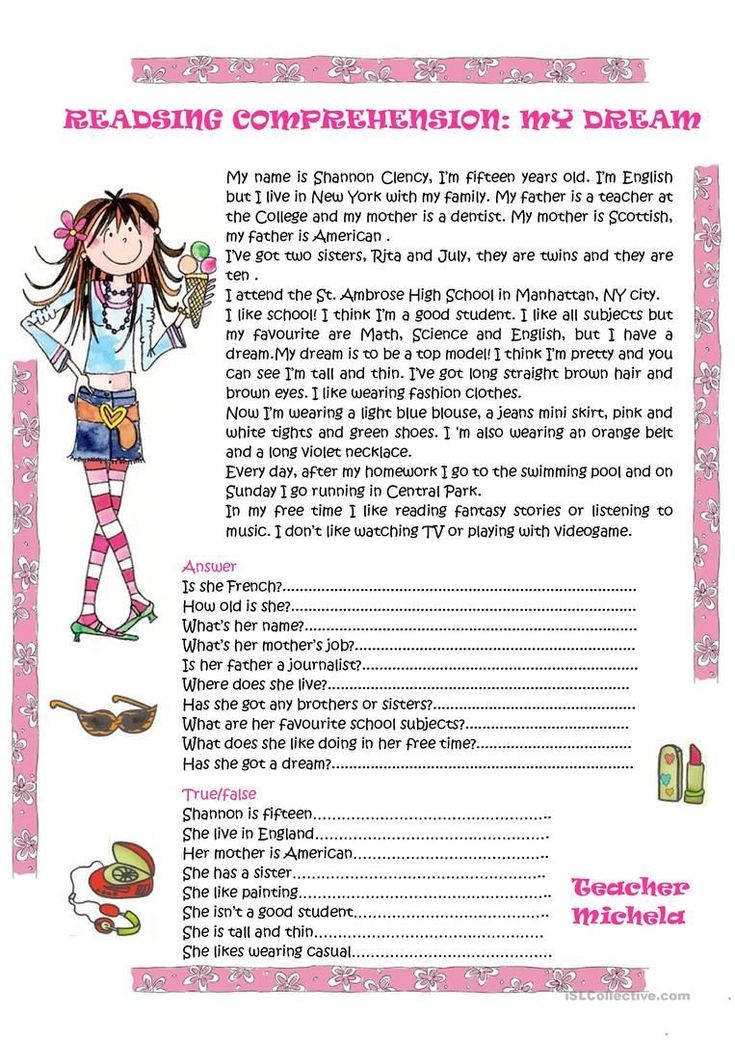 And the question “What does this book teach us?” it also assumes that there is a certain correct answer, of course - one, and it is known to an adult. The task of the child is to guess the answer. Do not check your words with your feelings, do not try to formulate what hurt you in the story, and what left you indifferent or caused anger and why it happened - namely, to guess what the adult wants. A whole battery of such texts came to us for the Living Classics competition. The children were offered free topics - to think / reason, and they are trying their best to please us, trying to recognize what we expect from them. God forbid they say something "wrong". It seems that we are not holding a contest for teenage essays, but a Guessing game. nine0003
And the question “What does this book teach us?” it also assumes that there is a certain correct answer, of course - one, and it is known to an adult. The task of the child is to guess the answer. Do not check your words with your feelings, do not try to formulate what hurt you in the story, and what left you indifferent or caused anger and why it happened - namely, to guess what the adult wants. A whole battery of such texts came to us for the Living Classics competition. The children were offered free topics - to think / reason, and they are trying their best to please us, trying to recognize what we expect from them. God forbid they say something "wrong". It seems that we are not holding a contest for teenage essays, but a Guessing game. nine0003
If you wish, of course, you can also see the ability to understand the “text” in this, only it is not directly related to reading fiction.
Of course, children with underdeveloped reading skills may indeed fail to grasp the logical connections between characters and events.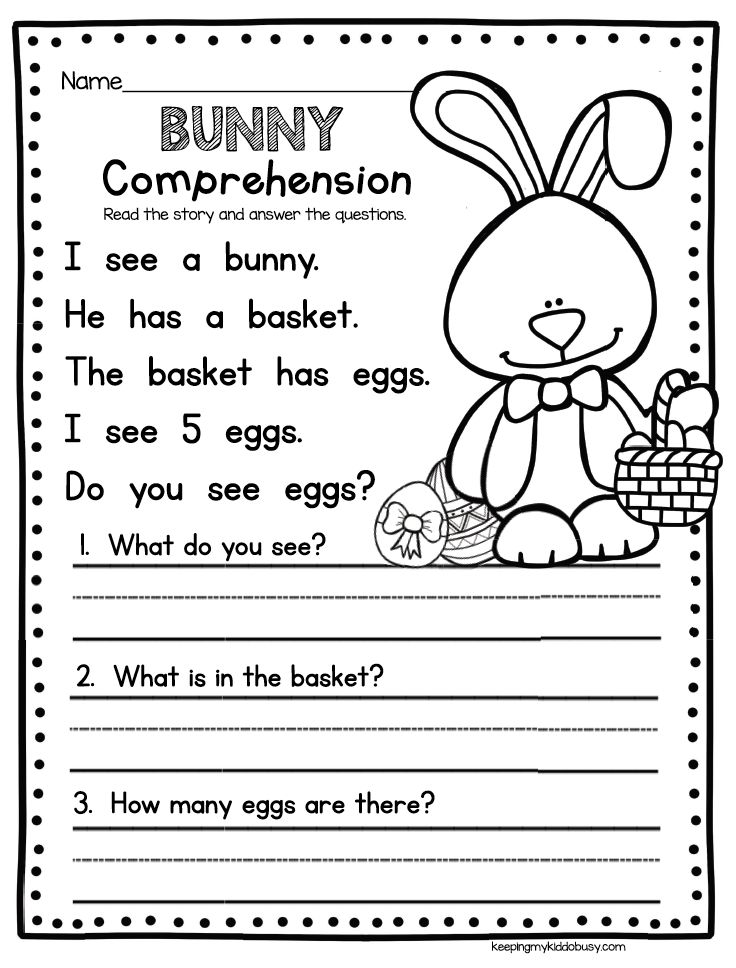 They pronounce the words, but they cannot grasp the meaning, they do not have a complete picture in their head. But this is visible to the naked eye: the child suffers over the lines. It seems that he unloads the wagons, and does not read. Here it is somehow difficult to talk about the high. Here it is necessary to find out the reasons for what is happening. nine0003
They pronounce the words, but they cannot grasp the meaning, they do not have a complete picture in their head. But this is visible to the naked eye: the child suffers over the lines. It seems that he unloads the wagons, and does not read. Here it is somehow difficult to talk about the high. Here it is necessary to find out the reasons for what is happening. nine0003
But I'm talking about the situation of the "norm" - when the child has a text in front of him that he is quite capable of mastering.
And we, adults, want to know what happens inside the child as a result of meeting with a specific text, what impression the text made on him. It seems that we want to know children's feelings-thoughts.
But for some reason we use the technique of interrogation.
***
A lot of books are being published now - much more than before. And almost every book has its readers. Different books have different readers. Diversity makes it much more difficult for us readers today to come to a consensus than it used to be.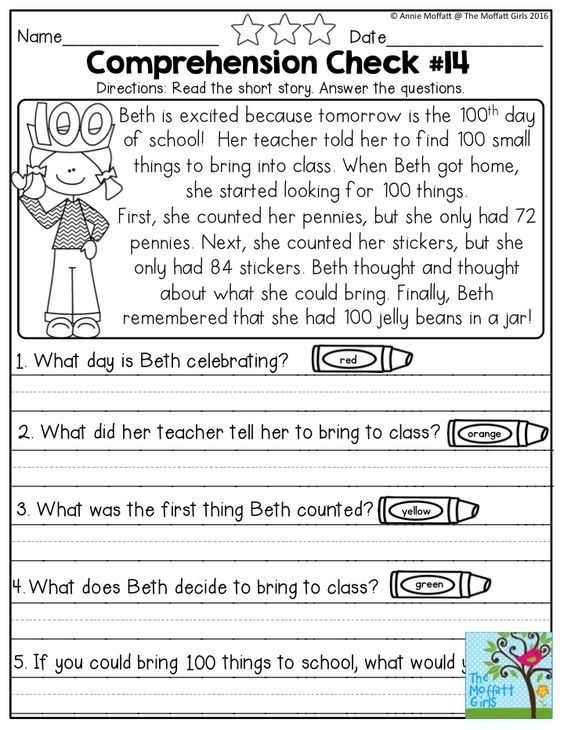 For example, I often find myself not sharing the book preferences of even people I respect. And there are many more people whose preferences I do not share than those with whom I agree when evaluating the book. But I am ready to admit that the point is not in the book, but in me - in those internal "hooks" that the readable clings to; in those internal depressions, breaks and bulges, the relief of which allows me to develop with this or that work. Each reader has his own inner drawing. Everyone has their own resonator inside. Therefore, there is no “only true answer” to the question “What did the writer want to say?” (in various modifications) does not exist. And there is no difference whether you pick up a classical work or a work from the “new literature”. It would be much more correct to ask: “What did you hear? What did this book tell you? nine0003
For example, I often find myself not sharing the book preferences of even people I respect. And there are many more people whose preferences I do not share than those with whom I agree when evaluating the book. But I am ready to admit that the point is not in the book, but in me - in those internal "hooks" that the readable clings to; in those internal depressions, breaks and bulges, the relief of which allows me to develop with this or that work. Each reader has his own inner drawing. Everyone has their own resonator inside. Therefore, there is no “only true answer” to the question “What did the writer want to say?” (in various modifications) does not exist. And there is no difference whether you pick up a classical work or a work from the “new literature”. It would be much more correct to ask: “What did you hear? What did this book tell you? nine0003
This form of the question indicates a shift towards the reader. This recognition of the reader as a full participant in the reading process.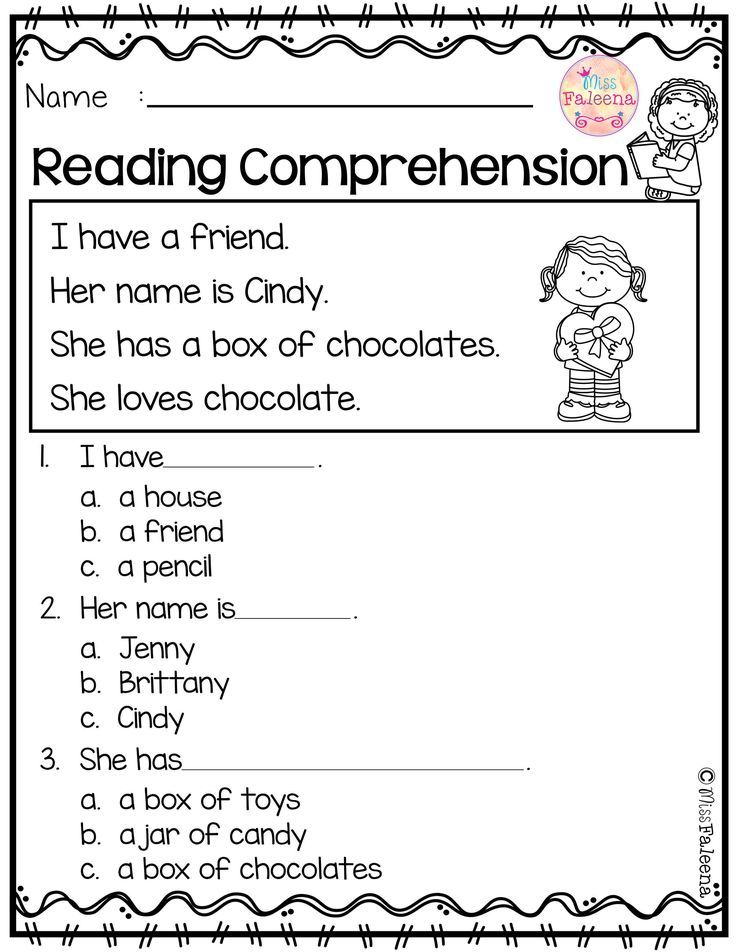 Recognition that reading is a communication in which two people participate - the writer and the reader. And the reader in this communication is not a passive side at all. It is only through him that what is written acquires meaning. Through his inner work, through his inner effort, through the reader's work, which cannot be replaced by any pre-created "correct" formulations, by any literature textbooks. nine0003
Recognition that reading is a communication in which two people participate - the writer and the reader. And the reader in this communication is not a passive side at all. It is only through him that what is written acquires meaning. Through his inner work, through his inner effort, through the reader's work, which cannot be replaced by any pre-created "correct" formulations, by any literature textbooks. nine0003
From this position, text comprehension is the ability to speak out about what has been read: but not in the format “the writer is a genius/enemy of the people/our everything – expressed people’s aspirations/a narrowly subjective point of view”, but in the style of “it suits me/not suits”, “it touches / doesn’t touch me”, “it hurts me / I don’t care about it”. Seems like a simplification. But it requires honesty and even selflessness.
And the next step is to be able to explain why it hurts you or why it touches you so much. Not what the writer wanted to say (the writer does not always understand this himself, and sometimes his desire to say something contradicts what he really said), but what I, a specific reader, was able to take out of what was said.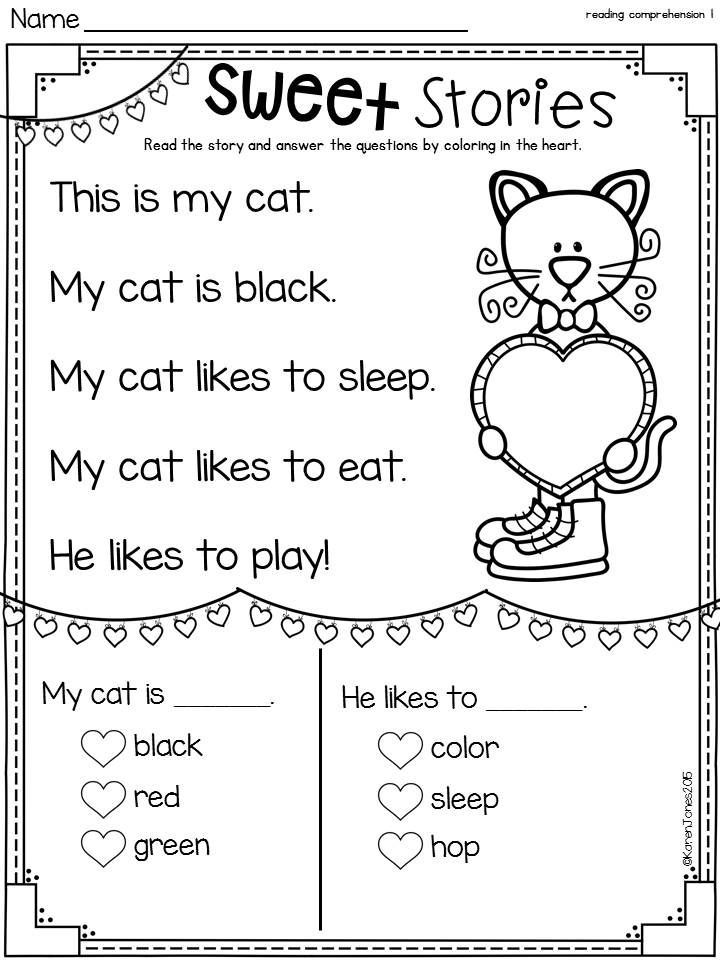 nine0003
nine0003
If suddenly I learned a “lesson” or formulated the “moral” of a fairy tale, this is my own business. Perhaps I can talk about it in an interesting way. But such a story will tell about me no less than about a book or about an author.
And in this case, the conversation about books - including with children - really turns into a conversation about the personal. Such a conversation is connected with respect for the freedom of the reader's perception and, at the same time, the reader's responsibility.
This, it seems to me, is understanding. And the ability to understand this needs to be nurtured. From the very moment we start reading books to the baby. Of course, you need to talk to him about what you read. But how? nine0003
You can, for example, like this:
- I don't like this Karabas-Barabas. What a wicked one! And cunning. If he caught up with Pinocchio... Can you imagine what would happen?
- I felt so sad when the Mouse and the Mole discovered the Swallow.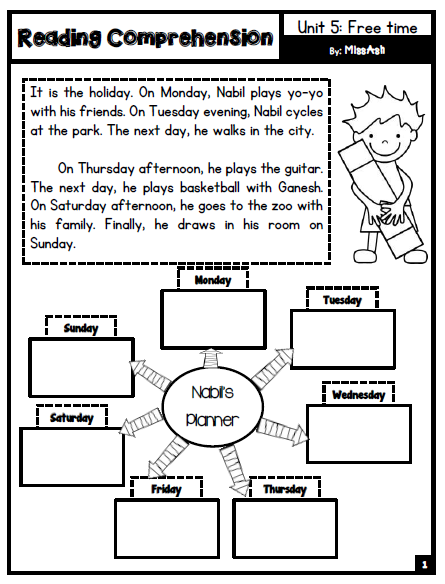 They spoke incorrectly about the Swallow. They didn't feel sorry for her. If I had found the Swallow, I would not talk about her like that.
They spoke incorrectly about the Swallow. They didn't feel sorry for her. If I had found the Swallow, I would not talk about her like that.
- I'm in a bad mood because of this Pinocchio. Look, you lied again! And again, his nose grew. Listen, don't you know any boys who tell lies? What's up with their nose? Suddenly, too, grows like a branch on a tree? nine0003
Such "I-messages" (messages in which we directly talk about our feelings, about our mood) encourage the child to agree with you or disagree - i.e. find your position. Whether the form of the reaction will be concise or extended depends on various reasons. It is likely that immediately after reading the child will not want to talk about his experiences at all. After all, experiences should be clothed in the form of words. And this, paradoxically, interferes with experiences.
The child must “cook” his impressions from what he read in himself, vilify them inside. Therefore, it is better to return to the conversation about what you read after some time, for example, the next day: “Do you remember, we read about Petson and Findus? Do you remember how scared we were (funny, sad)?. . Do you remember who helped Findus when he got lost? Maybe we have some mukla at home, but we don’t notice them?
. Do you remember who helped Findus when he got lost? Maybe we have some mukla at home, but we don’t notice them?
Talking about the “motives” of what you heard (read) is important primarily because it is the “socialization” of the experience. The feeling of a common experience with an adult, of course, arises already at the moment of reading. And if later it is also embodied in the word, you can’t think of a better way to develop children’s thinking. nine0003
However, it would be wrong to see this as a “method”: I read a piece of text, measured the “appropriate” time after reading, “reacted” with the help of “I-statements” ... In a normal situation, when children and adults communicate with each other When communication is not only a value, but also a mutual pleasure, this happens naturally, by itself.
Marina Aromshtam
How to improve your ability to understand the text you read?
02/06/14
Strategies for Autistics, Parents and Educators to Cope with Reading Difficulties
Source: Autism After 16
There may be several reasons for this.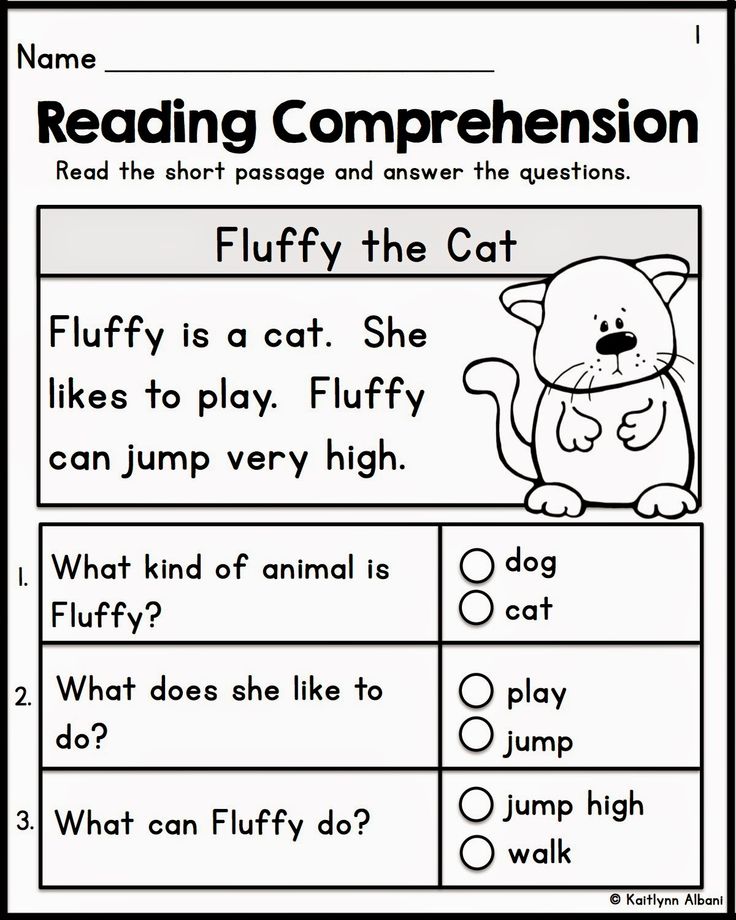 It is possible that a person puts so much effort into voicing words (out loud or to himself) that they lose their meaning. In other cases, the topic is so uninteresting that it is difficult to focus on the information in the text. Many children and adults with autism spectrum disorders have severe reading comprehension difficulties, even if they have no problems with reading as such. This can make it very difficult to study at school even for children without intellectual disabilities, especially in high school, when the requirements for reading and understanding large amounts of text increase significantly, and texts become more complex. The following are strategies for improving text comprehension that adults with autism spectrum disorders and parents and educators of children with ASD can use. nine0003
It is possible that a person puts so much effort into voicing words (out loud or to himself) that they lose their meaning. In other cases, the topic is so uninteresting that it is difficult to focus on the information in the text. Many children and adults with autism spectrum disorders have severe reading comprehension difficulties, even if they have no problems with reading as such. This can make it very difficult to study at school even for children without intellectual disabilities, especially in high school, when the requirements for reading and understanding large amounts of text increase significantly, and texts become more complex. The following are strategies for improving text comprehension that adults with autism spectrum disorders and parents and educators of children with ASD can use. nine0003
Metacognition - thinking about how we think - is the basis for improving understanding while reading. In other words, to improve text comprehension, we must consciously pause while reading and analyze our opinions, perceptions, and thoughts related to what we have read.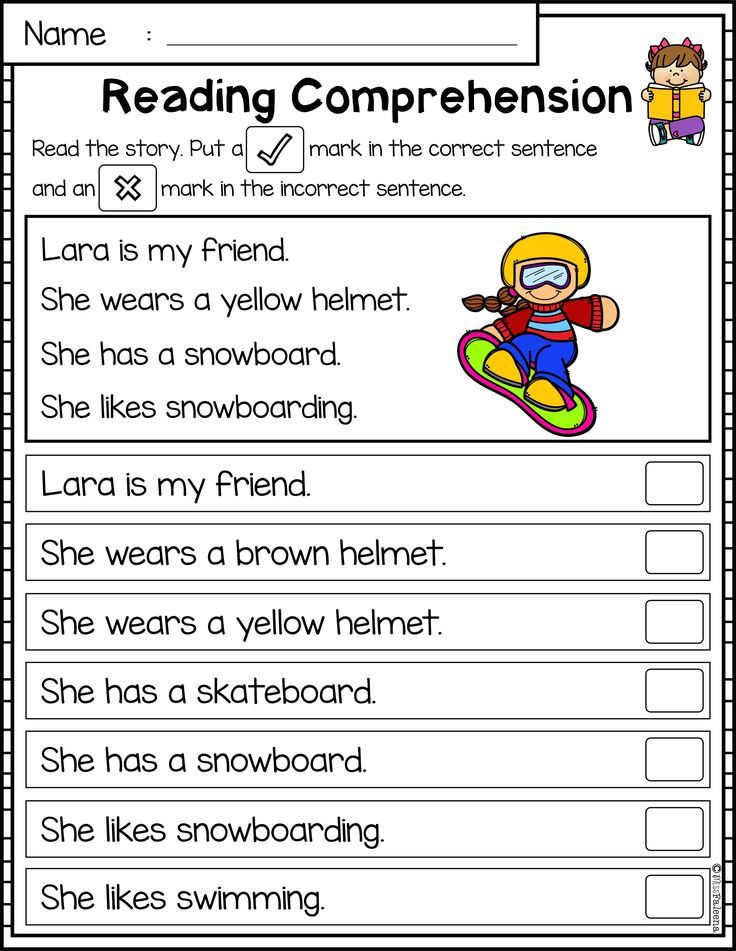 For example:
For example:
Before reading
- Determine the purpose for the upcoming reading. Think in advance about what you should find in the text while reading.
- Look at the title of the text and try to figure out what the text might be about. nine0003
Skim through the entire text without reading carefully, paying attention to headings and subheadings, bold words and illustrations. Think about what this text might be about.
- Try to remember what you already know about the topic, the author, or this story.
While reading
- Reflect on what you have read after each paragraph or chapter.
Consider whether you agree with ideas, characters, or facts.
- If you do not understand the meaning of some sentences or paragraphs, write down what you do not understand. nine0003
- Write down unfamiliar words to find out their meaning after reading.
After reading
- Think about what you learned while reading.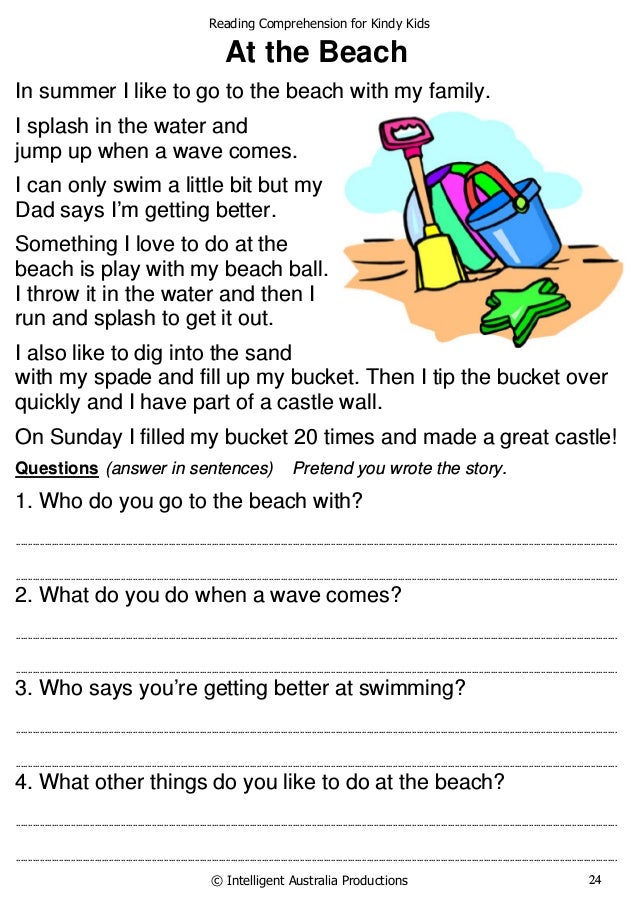
— Write your own questions for the author.
Think about how what you read relates to your own life.
- Formulate a summary of what you have read.
- Review your notes and try to find answers to your questions through repeated reading, searching the Internet, or talking to another person. nine0003
Talk about what you read
Discussing what you read with another person provides another source of information instead of rereading the text. This is especially useful if you don't really enjoy reading. While talking about what you read, you will be able to ask questions that you have, this will allow you to learn more about the point of view of other people and will provide you with the opportunity to put into words what you have read, which will help you remember and understand the text better.
Practice reading as often as possible
The best way to improve reading comprehension is to read as much as possible. It doesn't matter what the person is reading.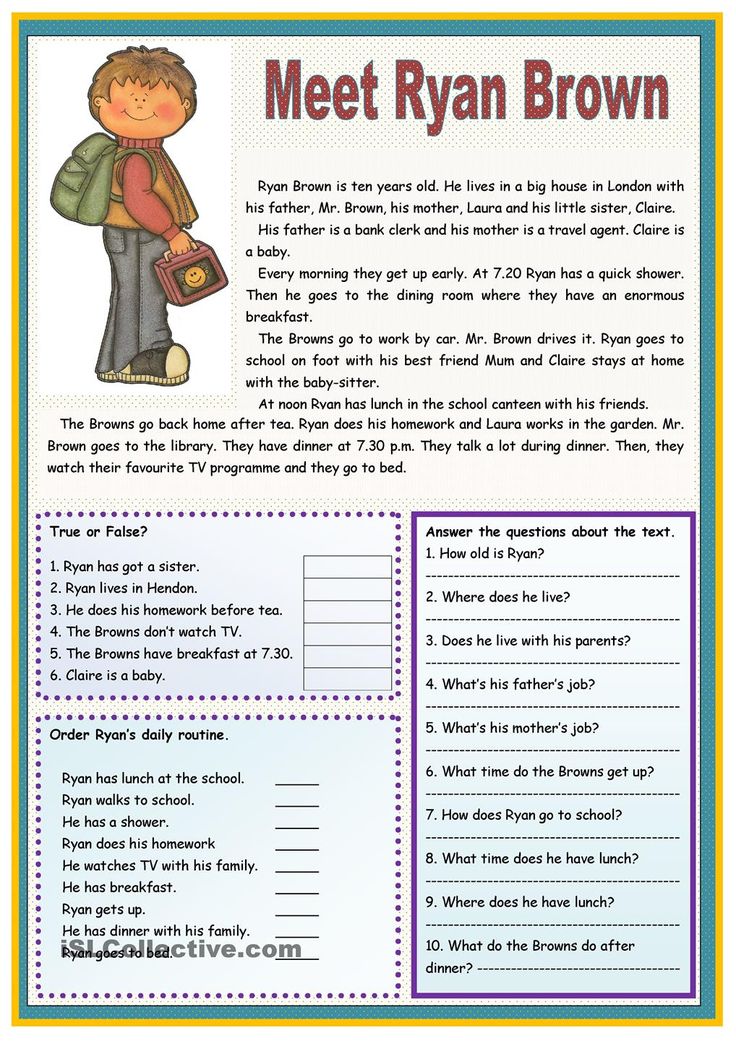 The more you read, the better your comprehension skills will be. Here the “Matthew effect” takes place, when “he who has will be given and will be multiplied, and what he has will be taken away from the one who does not have.” Students who enjoy reading read a lot and often, and their reading skills improve. Those who do not enjoy reading devote little time to it, as a result, their skills lag more and more behind their peers. That is why our first priority is to motivate children to read. If they enjoy reading comics, sports articles, or online magazines, then encourage them to do so as often as possible. nine0003
The more you read, the better your comprehension skills will be. Here the “Matthew effect” takes place, when “he who has will be given and will be multiplied, and what he has will be taken away from the one who does not have.” Students who enjoy reading read a lot and often, and their reading skills improve. Those who do not enjoy reading devote little time to it, as a result, their skills lag more and more behind their peers. That is why our first priority is to motivate children to read. If they enjoy reading comics, sports articles, or online magazines, then encourage them to do so as often as possible. nine0003
Take the children to the library as often as possible and let them look at any books they want. Do not try to force on children what you think they should read. We want them to read—as much as possible. And that's it. If they liked a book by a certain author, then find all the books by that author so they can pick something. If the children are interested in a topic, then find them reading material according to their interest.
Motivation for Reading
The first task for the unmotivated reader is to find reading material that is directly related to what interests him outside of reading. For example, if a child enjoys watching movies, they may enjoy reading movie reviews online or in movie magazines. You may think that this is not a "real" reading, but it is not at all the case. Many people believe that the only way to develop reading skills is with books. In fact, this is not necessary at all, especially in our age of the Internet. nine0003
Also, if children read often about things they are interested in, this will help them become better readers in general, especially if they practice reading comprehension skills in parallel. After the motivation to read begins to form, you can begin to practice reading less interesting materials. That said, if the strategies to improve comprehension have already been practiced on interesting texts, it will be easier to use them while reading on boring topics.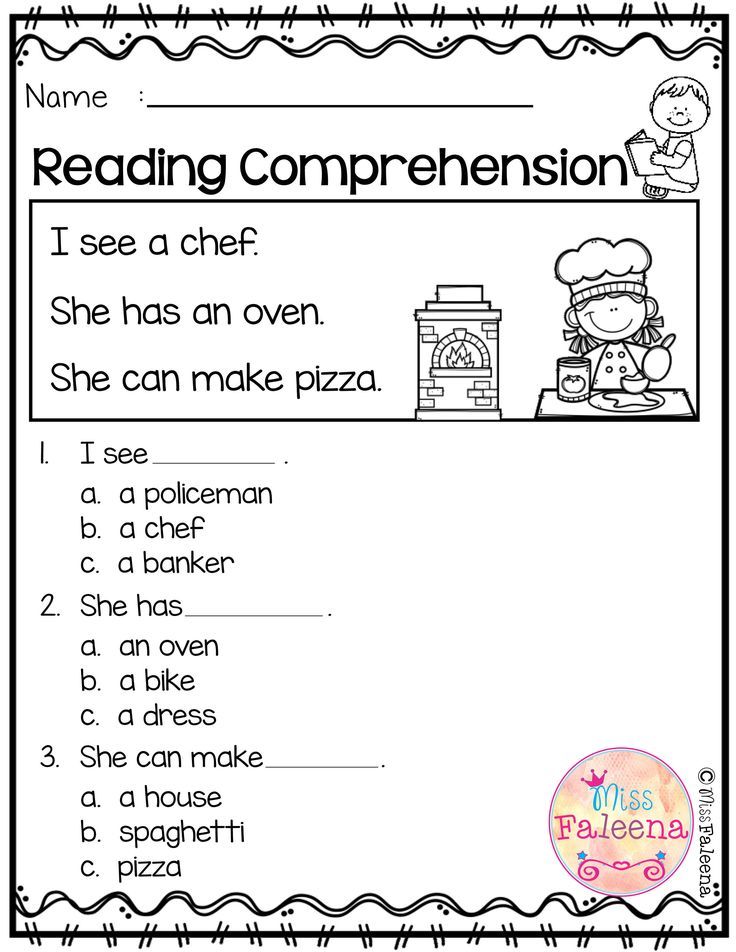
Strategies for improving reading comprehension
Start with the strategies that seem most attractive and try them one at a time. Don't try to master every single strategy, sometimes less is more. In other words, it's best to master a few strategies to perfection, rather than practicing all the strategies without exception, which can make it unclear what to use right now. Strategies to improve reading comprehension include:
- Conversational reading: Ask questions, argue, clarify, summarize, and predict as you read. nine0003
- Stickers: Use stickers to write down words you don't understand, or use exclamation marks to mark sentences you like and question marks to mark phrases or paragraphs you don't understand.
- Reading in pairs: Reading aloud with another person one paragraph at a time. Discuss what you have read with each other after each paragraph.
- Thinking out loud: As you read aloud in pairs, voice out any thoughts, questions, or misunderstandings that come to mind. For example, if a character or event reminded you of something, stop and talk about that personal association. This technique helps to remember what has been read in the future. nine0003
For example, if a character or event reminded you of something, stop and talk about that personal association. This technique helps to remember what has been read in the future. nine0003
- Re-reading: Read the text again, trying to find answers to the questions that have arisen.
- Text connections: As you read, determine how this text relates to you, to other texts, and to the world in general. In connection with yourself, you need to think about how the read relates to you personally. In World Links, you can link text to what you already know. Finally, in text links, you can link what you've read to what you've read about before.
- The Three Bears Principle: When choosing a book from a library or bookstore, think about whether it is too simple or too complex. Too simple means that the reader will easily understand all the words or have already read this book many times. Too complex means that there are more than five unfamiliar words on one page or the meaning of the first page is not clear. If the book is just right, then this is a new book, where the reader may not know some of the words on the page, but in general understands what is at stake. nine0003
If the book is just right, then this is a new book, where the reader may not know some of the words on the page, but in general understands what is at stake. nine0003
- Dividing the text into parts: Read only a few paragraphs or sentences at a time. Think about what you read using reading strategies before continuing.
- Visualization: While reading, always try to visualize how the characters and the scenes described look like.
- Blogs: Check if there is any blog or forum on the Internet where this topic or book is discussed online, read what other people think about it and try to write your own opinion. nine0003
- Journaling: As you read, write down your thoughts in a special journal.
- Graphic organization: Make a chart showing how much you understand before, during, and after reading.
Progressive Implementation Model
If you are a parent or educator, you can use the Progressive Implementation Model to help a student with autism learn strategies for reading comprehension.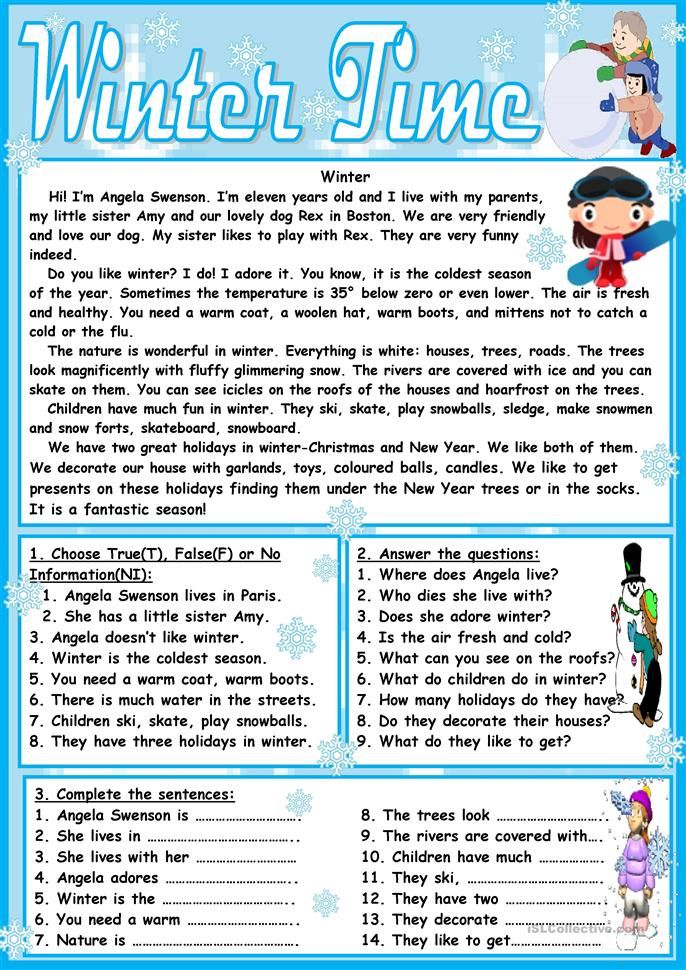 First, demonstrate to the student how you yourself read using this strategy. Then use this strategy together, under your guidance. Then ask the student to apply this strategy again (in a different situation) on their own. nine0003
First, demonstrate to the student how you yourself read using this strategy. Then use this strategy together, under your guidance. Then ask the student to apply this strategy again (in a different situation) on their own. nine0003
Make sure you discuss reading with the student and whether the strategy is helping or not. You may need to model this strategy for the student many times, or practice it many times together until it becomes a natural part of the reading process and the student can apply it completely on his own.
Availability of books to read
If reading skills are too low, use books on topics that are interesting to the student, but with very low reading requirements. As a rule, they have a lot of illustrations and little text. It can be children's encyclopedias and reference books. They keep the reader motivated, their topics are age-appropriate, and the reading isn't too difficult. nine0003
You should also pay attention to the following books:
- Books with many photographs and illustrations, which will greatly facilitate understanding.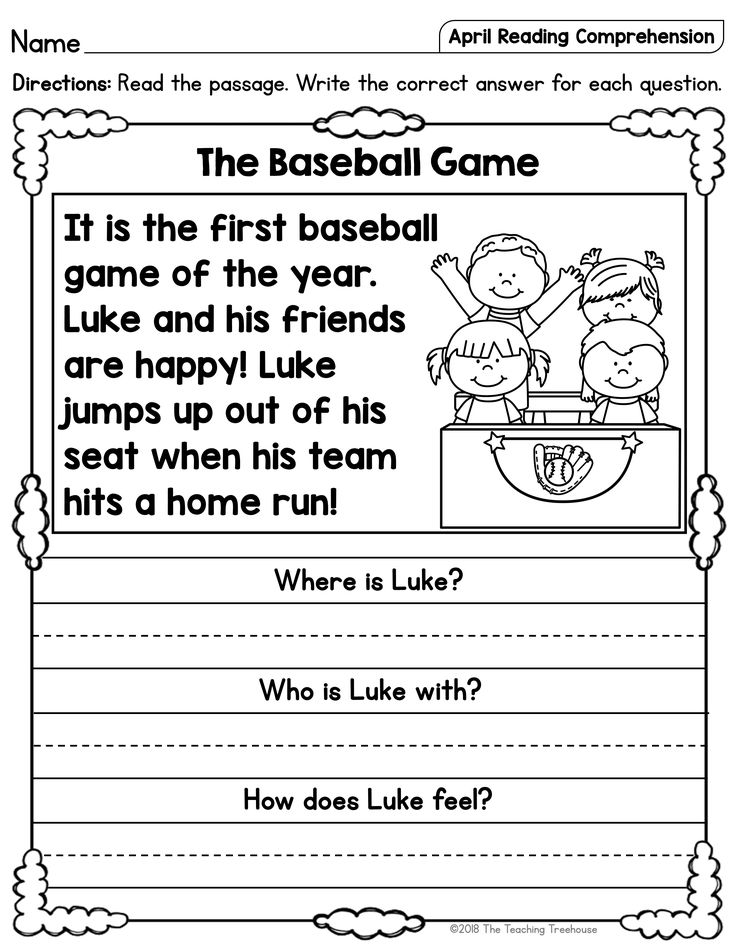
- Books with fairly large letters.
- Books with a small amount of text on one page so that the amount of text on the page does not cause stress.
- Books that have titles, subtitles, clear definitions of words in the glossary. These books are the easiest to understand.
Relationship between reading and writing
You may be wondering why it is so common to write down something while working on reading comprehension. The reason is that this is another way to better understand and assimilate the material read. For example, if someone finds it difficult to speak verbally about what they have read, then keeping a diary, blogging, or graphing can help analyze what they read and update the information in memory, but without verbal dialogue.
Closing Thoughts
The goal of all reading is to understand the text, so it is hoped that these strategies and ideas will enable you to improve your reading skills or help your child or student achieve that goal.

